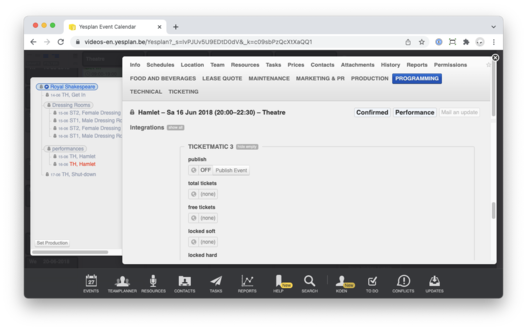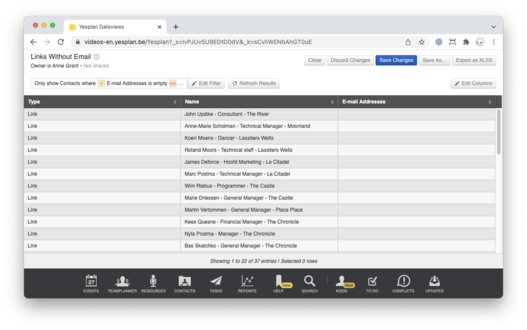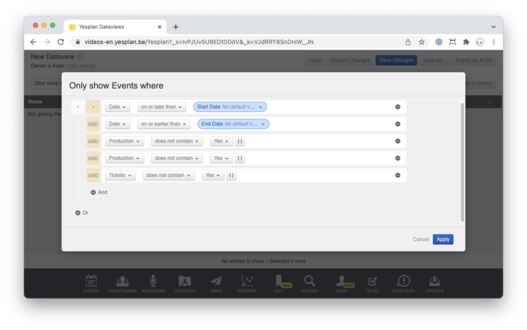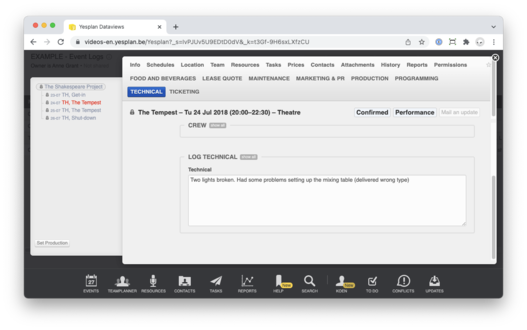In Yesplan, dataviews allow you to create tables with data of events, resources, contacts and so on. But did you know that you can also use them as to-do lists? We’ve set out some examples of how you can use dataviews to manage your work tasks.

The new season is fully scheduled and you're ready to sell your tickets to the public. That means forwarding dozens or hundreds of events from Yesplan to your ticketing software for further processing. But which events exactly are you allowed to forward? And how can you do that in a limited number of clicks? With dataviews, you can easily create a list of all the events that you are allowed to forward!
The events are all forwarded if the dataview no longer shows any for the selected period!
When organising your events, you often communicate with different people, both inside and outside your organisation. You can also book these people as contacts for an event. But how do you check, for example, whether all contacts actually include an email address?
Thanks to the dataview you can make a list of all contacts without an email address, but you can also extend it to other contact data.


Many employees do their part when organising an event. The Technical Director, Production Manager, Programmer, Marketing Manager and Hires Manager all have to add information. How can you keep an overview and make a list of all the events for which you still have to add information?
You can add custom data fields of the "Checkbox" type to events, for example "Tech has added info", "Production has added info" etc. With a dataview you can then create a list of all events where a checkbox is not checked.
You can open this dataview regularly to check if you still need to add information to events!
During an event, issues can occur, such as a malfunctioning microphone, a broken window, a blocked door... Many organisations record this type of feedback in Yesplan with a text field, so that the person in charge can resolve the issue the day after the event. But how do you know that something has been filled in a report field and that the report has been processed?
Add custom data fields of the "Text Field" and "Checkbox" type to your events. The former is for the report, the latter to mark that the report has been read.
Is the dataview empty? Then you have processed all the events with a report and your work is done!

Do you want to know how to create dataviews? Then head over to the item “Help” in the navigation menu of Yesplan en click the links for the manual and online learning.
Ready to be fully immersed in our software? You can now discover our software in three different ways.